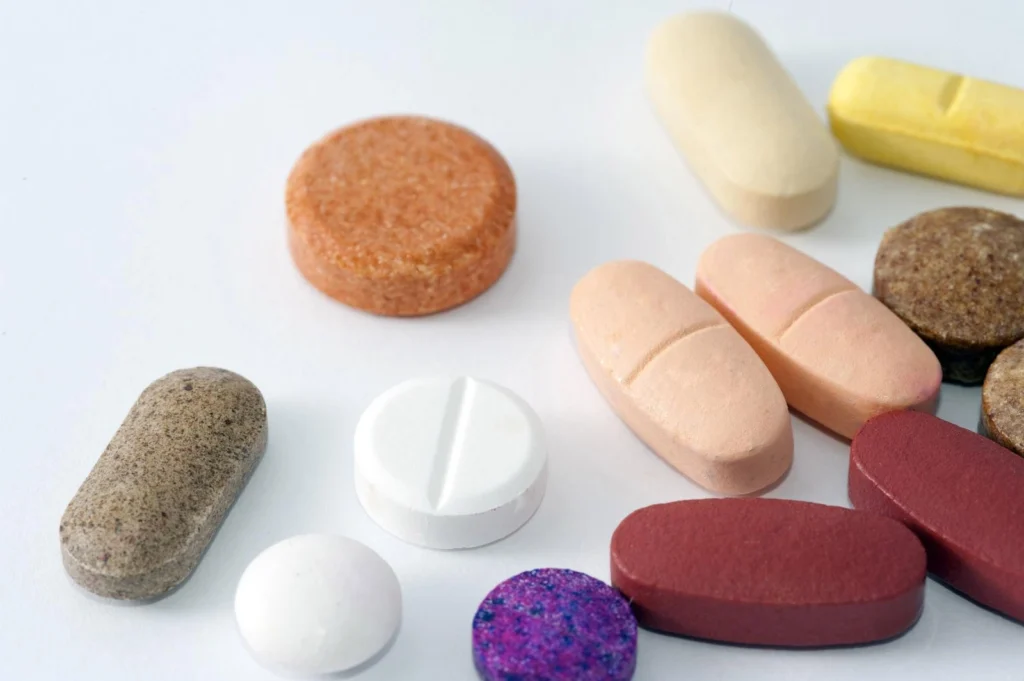
Addiction & Trauma Recovery Center
Licensed by Thai Ministry of Health #84-03-00294
Stimulants: Cocaine, Meth, and Prescription Drug Abuse
Understanding Stimulant Drugs
Stimulant abuse is a growing problem, affecting both those who misuse prescription stimulants and those who consume illicit drugs like cocaine and methamphetamine. Stimulants increase energy, focus, and alertness, but long-term use can lead to addiction, mental health issues, and serious physical health consequences.
How Do Stimulants Work?
Stimulants enhance the activity of the central nervous system by increasing dopamine and norepinephrine levels in the brain. This leads to:
- Increased heart rate and blood pressure
- Elevated mood and energy
- Decreased appetite and sleep disturbances
While some stimulants are legally prescribed for conditions like ADHD, others are illegally manufactured and pose severe health risks.
While stimulants may initially produce feelings of euphoria and heightened confidence, prolonged use can lead to severe psychological consequences, such as anxiety, paranoia, and even psychosis.
For example, chronic methamphetamine use has been linked to hallucinations, delusions, and violent behavior, while cocaine abuse can cause intense mood swings and depression during withdrawal. Additionally, the cycle of stimulant use often leads to a “crash” after the drug’s effects wear off, leaving users feeling exhausted, irritable, and desperate to use again to regain the high.
This cycle not only reinforces addiction but also exacerbates mental health challenges, making it difficult for individuals to break free without professional help. Understanding these risks underscores the importance of early intervention and comprehensive treatment for those struggling with stimulant abuse.

Prescription vs. Street Stimulants
Prescription Stimulants
These drugs are commonly used to treat ADHD and narcolepsy but are often misused for performance enhancement or recreational purposes.
- Common Prescription Stimulants:
- Adderall (Amphetamine)
- Ritalin (Methylphenidate)
- Dexedrine (Dextroamphetamine)
- Modafinil (Provigil)
Street Stimulants
Illicit stimulants have no medical use and carry a high risk of addiction.
- Cocaine – A short-acting stimulant derived from coca plants, typically snorted or smoked.
- Methamphetamine (Meth) – A synthetic stimulant with more prolonged effects, often smoked or injected.
Cocaine vs. Meth Effects
- Cocaine produces an intense but short-lived high (15-30 minutes).
- Meth lasts much longer (6-12 hours) and has a stronger impact on the brain’s dopamine system.
- Cocaine is often associated with cardiovascular risks, while meth is more likely to cause severe mental health issues such as psychosis.
Understanding the differences between cocaine and methamphetamine effects is crucial in addressing the unique risks associated with each drug.
Prescription stimulants, while legally available, are often diverted from their intended medical use and misused by students, professionals, and athletes seeking to enhance focus, productivity, or performance. This misuse can lead to dependency, even among individuals who initially believed they were using the drugs responsibly.
On the other hand, street stimulants like cocaine and methamphetamine are often associated with illicit drug markets and disproportionately impact marginalized communities, where access to treatment and resources may be limited. The production and distribution of street stimulants also contribute to broader societal issues, such as crime and public health crises, including the spread of infectious diseases through needle sharing.
By understanding these differences, policymakers, healthcare providers, and communities can develop targeted strategies to address the unique challenges posed by both prescription and illicit stimulant abuse, ensuring that prevention, education, and treatment efforts are tailored to the specific needs of affected populations.

The Dangers of Long-Term Stimulant Use
Chronic stimulant abuse can lead to severe physical and mental health issues.
Health Risks of Long-Term Stimulant Abuse
- Cardiovascular Problems – High blood pressure, irregular heartbeat, and increased risk of stroke.
- Brain Damage – Long-term stimulant use can lead to cognitive impairment, memory loss, and changes in brain structure.
- Mental Health Issues – Anxiety, depression, paranoia, and stimulant-induced psychosis.
- Weight Loss & Malnutrition – Stimulants suppress appetite, leading to severe nutritional deficiencies.
How Does Stimulant Abuse Affect Mental Health?
- Anxiety & Panic Attacks – Overstimulation of the nervous system can cause excessive anxiety.
- Depression & Fatigue – After stimulant use, dopamine levels drop, leading to extreme fatigue and depression.
- Stimulant-Induced Psychosis – High doses, especially with meth, can cause hallucinations and paranoia.
The long-term effects of stimulants can be irreversible, making early intervention crucial.
Chronic stimulant abuse often leads to strained relationships, as individuals may prioritize drug use over family, friends, and responsibilities. This can result in isolation, loss of trust, and a breakdown of support systems, which are critical for mental and emotional health. Additionally, the financial burden of sustaining a stimulant addiction can lead to job loss, debt, and even homelessness, further exacerbating stress and instability.
Over time, the combination of physical health decline, mental health deterioration, and social consequences can create a cycle that feels impossible to break without professional help. Recognizing these broader impacts highlights the importance of holistic treatment approaches that address not only the physical and psychological aspects of addiction but also the social and environmental factors that contribute to it. Early intervention and comprehensive care can help individuals rebuild their lives and mitigate the long-term damage caused by stimulant abuse.
Stimulant Addiction and Withdrawal
Stimulant addiction develops when the brain becomes reliant on artificially elevated dopamine levels, making it difficult to function normally without the drug.
What Are the Dangers of Abusing Prescription Stimulants?
- Dependence and Addiction – Even when prescribed, prolonged use can lead to dependency.
- Cardiovascular Risks – Stimulants increase heart rate, raising the risk of heart attacks and strokes.
- Increased Tolerance – Users need higher doses to achieve the same effect, increasing overdose risks.
Withdrawal Symptoms from Stimulants
Stimulant withdrawal is not typically life-threatening, but it can be intensely uncomfortable.
Early Symptoms (24-48 hours after last use)
- Fatigue and excessive sleepiness
- Depression and anxiety
- Increased appetite
- Intense drug cravings
Peak Withdrawal Symptoms (3-7 days)
- Severe mood swings
- Lack of motivation
- Difficulty concentrating
- Irritability and paranoia
How to Quit Stimulant Drugs Safely
- Tapering Off – Gradually reducing the dosage can ease withdrawal symptoms.
- Hydration & Nutrition – Replenishing nutrients can help with recovery.
- Medical Supervision – Detoxing under medical care is recommended for heavy users.
- Therapy & Support Groups – Cognitive Behavioral Therapy (CBT) and 12-step programs can help manage cravings and prevent relapse.
Another aspect of stimulant withdrawal is the potential for post-acute withdrawal syndrome (PAWS), which can persist for weeks or even months after the initial withdrawal phase. Symptoms of PAWS, such as lingering depression, anxiety, and difficulty experiencing pleasure, can make it challenging for individuals to stay motivated in their recovery journey.
This prolonged phase often requires ongoing support, including therapy, medication (if prescribed), and participation in support groups to help individuals rebuild their lives and develop healthy coping mechanisms. Additionally, addressing the underlying reasons for stimulant use—such as untreated mental health conditions, trauma, or chronic stress—is essential for long-term recovery.
By providing a comprehensive support system that includes medical, psychological, and social resources, individuals can better navigate the challenges of withdrawal and build a foundation for sustained sobriety and improved quality of life.
What Treatment Options Are Available for Stimulant Addiction?
While there are no FDA-approved medications specifically for stimulant addiction, several treatment approaches have proven effective.
Behavioral Therapies
- Cognitive Behavioral Therapy (CBT) – Helps identify and change negative thought patterns.
- Contingency Management (CM) – Provides incentives for maintaining sobriety.
- Motivational Interviewing (MI) – Encourages individuals to commit to change.
Rehabilitation Programs
- Inpatient Treatment – 24/7 supervised care in a structured environment.
- Outpatient Treatment – Therapy and counseling while maintaining daily responsibilities.
Support Groups
- Narcotics Anonymous (NA) – A 12-step recovery program for stimulant addiction.
- SMART Recovery – A science-based approach to overcoming addiction.
Many people turn to stimulants as a way to self-medicate for conditions like depression, anxiety, or ADHD, and failing to treat these underlying issues can increase the risk of relapse. Integrated treatment programs that combine addiction therapy with mental health care, such as dual diagnosis treatment, can provide a more comprehensive approach to recovery.
These programs often include psychiatric evaluations, medication management (for co-occurring conditions), and specialized therapies tailored to the individual’s needs. Additionally, holistic therapies like mindfulness, yoga, and art therapy can help individuals manage stress, improve emotional regulation, and rebuild a sense of purpose beyond drug use.
By treating the whole person—mind, body, and spirit—these approaches can enhance the effectiveness of traditional therapies and support long-term recovery.
FAQs About Stimulant Abuse
What are the dangers of abusing prescription stimulants?
Prescription stimulants can cause heart problems, dependency, high blood pressure, anxiety, and addiction when misused.
Prolonged misuse can lead to memory problems, difficulty concentrating, and impaired decision-making, even when the individual is not under the influence of the drug. Over time, the brain’s reward system becomes dysregulated, making it harder to experience pleasure from everyday activities and increasing the risk of developing mental health disorders such as depression or anxiety.
Additionally, the misuse of prescription stimulants often involves taking higher doses than prescribed or using them in ways not intended, such as crushing and snorting pills, which can lead to dangerous spikes in blood pressure and heart rate, increasing the risk of stroke or cardiac arrest.
How does stimulant abuse affect mental health?
Stimulant abuse can cause paranoia, anxiety, depression, and stimulant-induced psychosis. Long-term use can alter brain chemistry, making recovery more difficult.
Chronic stimulant use can lead to extreme mood swings, irritability, and aggression, which can strain relationships with family, friends, and coworkers. Over time, individuals may become socially isolated, as their behavior becomes increasingly erratic or unpredictable.
This isolation can exacerbate feelings of loneliness and depression, creating a vicious cycle where the individual turns to stimulants to cope with emotional pain, only to experience worsening mental health symptoms. Additionally, stimulant-induced psychosis, characterized by hallucinations, delusions, and severe paranoia, can be particularly distressing and may require immediate psychiatric intervention.
What treatment options are available for stimulant addiction?
Effective treatment includes behavioral therapy, detox, inpatient or outpatient rehab, and support groups like NA or SMART Recovery.
Another important treatment option for stimulant addiction is the use of holistic and alternative therapies, which can complement traditional approaches and support overall well-being during recovery. Practices such as mindfulness meditation, yoga, and acupuncture have been shown to reduce stress, improve emotional regulation, and help individuals manage cravings.
Nutritional therapy is also valuable, as stimulant abuse often leads to poor eating habits and malnutrition, which can hinder physical and mental recovery. These holistic approaches, when combined with evidence-based treatments like cognitive-behavioral therapy (CBT) and contingency management, provide a well-rounded recovery plan that addresses the physical, emotional, and spiritual aspects of addiction.
Conclusion
Stimulant abuse—whether from cocaine, meth, or prescription stimulant abuse—poses severe risks to both mental and physical health. Understanding the differences between cocaine and methamphetamine effects and the health risks of long-term stimulant abuse is key to prevention and recovery.
If you or a loved one is struggling with stimulant addiction, professional treatment and support are available. Recovery is possible with the right help.
Breaking free from stimulant abuse often requires more than just individual effort; it involves creating a supportive environment that encourages sobriety and reduces triggers for relapse. Communities can play a vital role by promoting awareness, reducing stigma, and providing access to resources such as affordable treatment programs, sober living homes, and employment opportunities for those in recovery.
Additionally, educating the public about the dangers of stimulant abuse and the availability of effective treatments can empower individuals to seek help earlier and reduce the prevalence of addiction. By working together—families, healthcare providers, policymakers, and





















